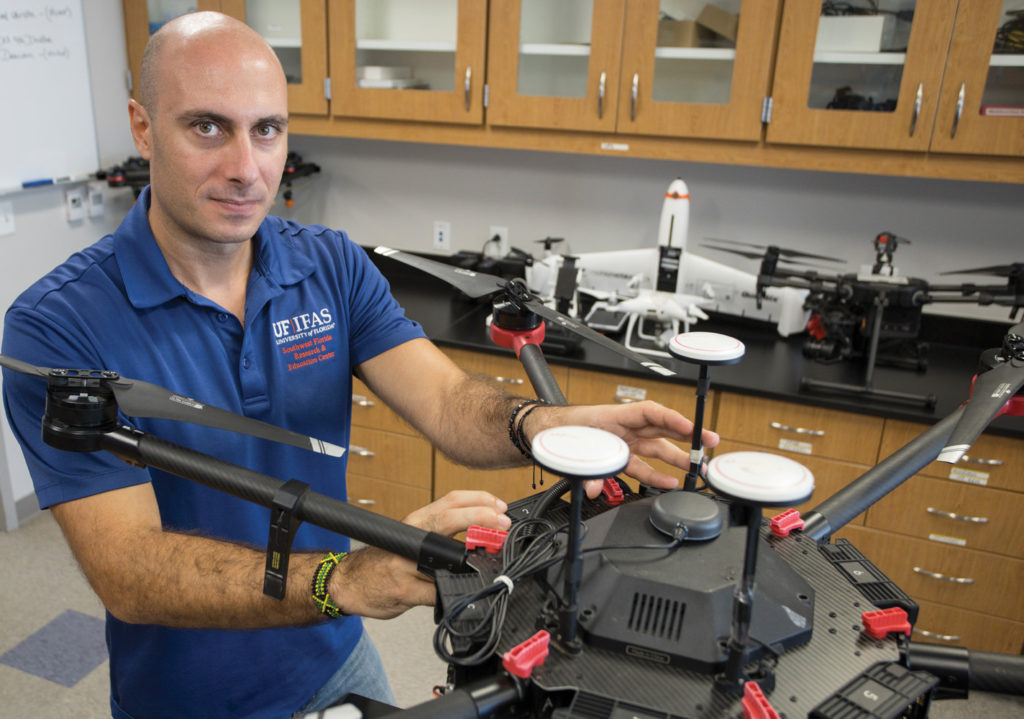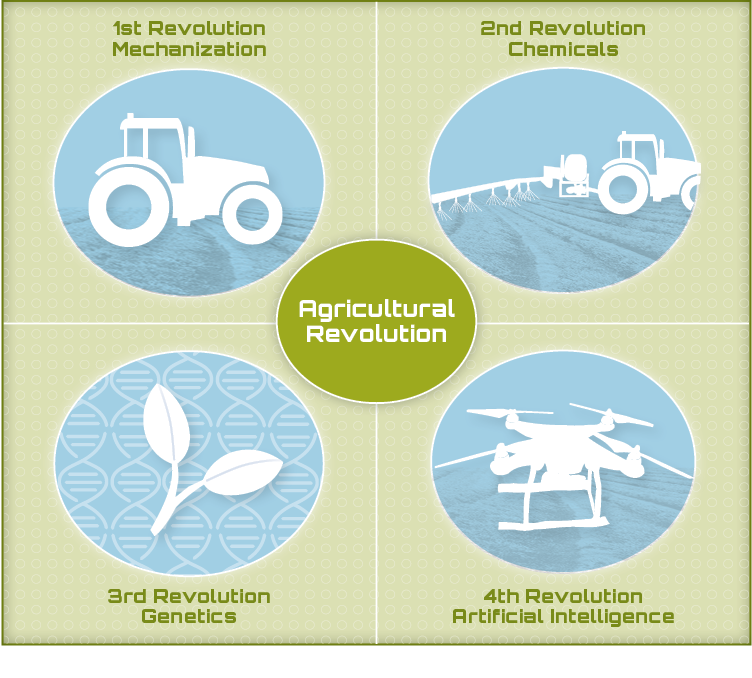On the experimental farm at the University of Florida’s Southwest Florida Research and Education Center, the fourth revolution of agriculture is in high gear.
Drones fly over citrus groves, counting and categorizing trees. On the ground, robotic arms collect pests from tree branches to determine which trees need to be treated.
Multispectral imaging collects spectral data from tomato plants, the better to detect diseases like target spot and bacterial spot before they spread throughout a field.
Ground-based remote sensing equipment scours groves, up one row and down the next, to survey for green vs. ripe fruit.
Machines straddle rows of peppers, sensors spotting and spraying weeds only as they encounter them.
And behind the scenes a new cloud-based software called Agroview sucks up all the data, analyzing it and synthesizing it into chunks that scientists — and farmers — can use to make better decisions.

"Artificial intelligence, robotics, automation, big data analytics, the internet of things. This is no doubt the fourth agricultural revolution. We are going to see these technologies in the field very, very soon.”
UF agricultural engineer Yiannis Ampatzidis says artificial intelligence — the convergence of new tools for data collection with cloud computing to analyze the explosion of information — is changing the face of agriculture in a way that is nothing short of revolutionary.
“Revolution is the perfect word,” says Ampatzidis, an assistant professor of agricultural and biological engineering in Immokalee at the SWFREC, a part of UF’s Institute of Food and Agricultural Sciences.
“Artificial intelligence, robotics, automation, big data analytics, the internet of things. This is no doubt the fourth agricultural revolution,” Ampatzidis says. “We are going to see these technologies in the field very, very soon.”

In the first agricultural revolution, mechanization — tractors, harvesters and such — changed life on the farm. In the second, chemicals — fertilizers and pesticides — drastically increased yields. In the third, genetics produced hybrid plants, boosting yields yet again. What will artificial intelligence capabilities do for agriculture in the fourth revolution? A better question, Ampatzidis says, is what won’t they do?
Todd Motis, a manager at Chemical Containers, an agricultural equipment designer and manufacturer, says the scope of research at UF and the SWFREC is large.
“What they’ve already done is just the tip of the iceberg,” Motis says.
SourceOriginal Article authored by Paul Rusnak in Growing Produce